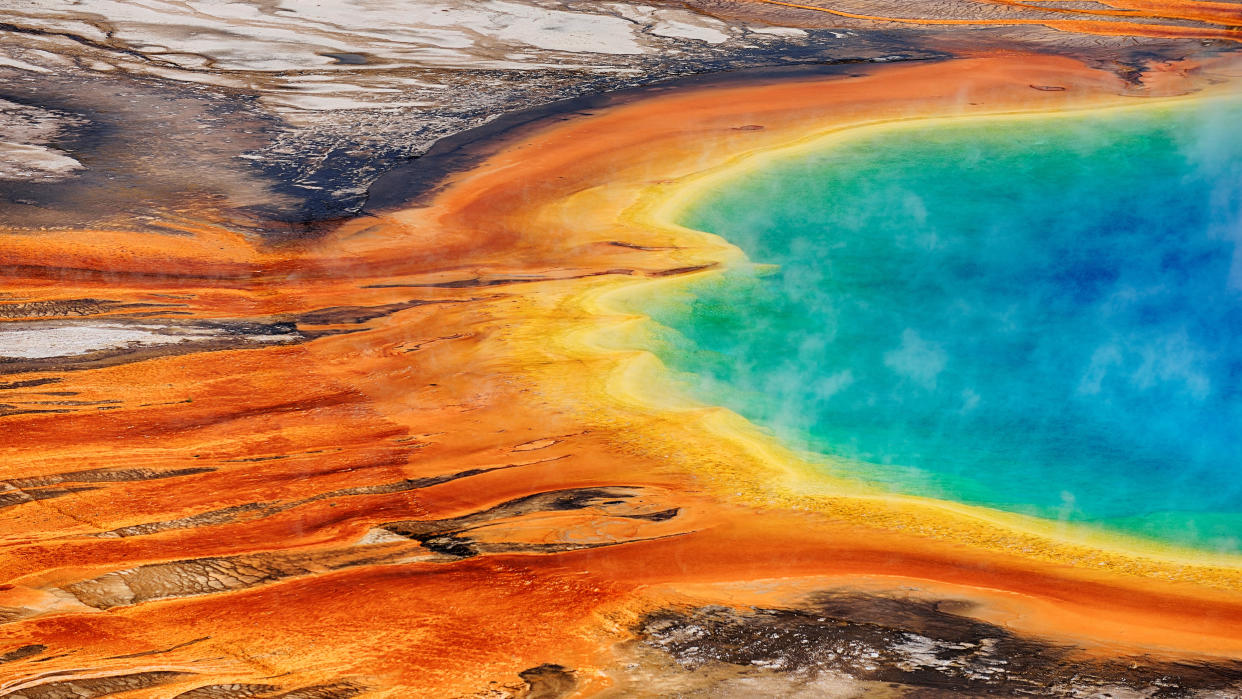"Shocked onlookers" watch man edge around near-boiling Yellowstone spring

- Oops!Something went wrong.Please try again later.
A man has been caught on camera wandering off the boardwalk at Grand Prismatic Spring in Yellowstone National Park for a better look at the scalding waters. This is incredibly dangerous; temperatures at Grand Prismatic range from 145°F to 189°F (63°C to 87°C), which is hot enough to cause serious burns within three seconds.
The incident was caught on camera by Gary Mackenzie and his wife. The couple sent their video (which you can watch below) to Instagram account TouronsOfYellowstone, which calls out bad behavior at US National Parks. Just last week, a visitor was seen scalding themselves while trying to dabble their fingers in the waters of Silex Spring, which is one of the hottest springs in the Fountain Paint Pot area.
"We were in Grand Prismatic and we see two dudes walk across the spring area," Mackenzie explained. "One guy turns around and headed back to over look trail while second guy continued to the board walk and walked directly into the crowd of shocked onlookers."
A post shared by TouronsOfYellowstone (@touronsofyellowstone)
A photo posted by on
People have been severely injured and killed after falling into geothermal features at Yellowstone, and the National Park Service (NPS) explains that just walking around the edges can be dangerous because "scalding water underlies most of the thin, breakable crust around hot springs".
In 2016, a man was killed after falling into the park's hottest water feature, the Norris Geyser Basin, and his body was completely dissolved by the acidic, near boiling water before rescuers could reach him. As The Guardian reported at the time, 23-year-old Colin Scott and his sister Sable had intentionally wandered off the boardwalk looking for a warm place to swim when he fell.
After attempting to save him herself, Sable called for help. Park Rangers determined that Colin had sadly died, but the harsh conditions together with an impending thunderstorm meant it was impossible to recover him from the water. By the following morning, there was nothing to be found.
"The consensus among the rescue/recovery team [...] was that the extreme heat of the hot spring, coupled with its acidic nature, dissolved the remains," park officials wrote in a report following the accident.
Hot spring safety
Yellowstone National Park was created to conserve the geysers and hot springs in the region, and they remain one of its biggest attractions.
Grand Prismatic, as its name suggests, is best known for its mats of colorful thermophilic bacteria, which vary in hue as the temperature increases closer to the water. Yellow and colorless bacteria grow in the hottest areas, while orange, brown and green bacteria prefer the slightly cooler edges.
A network of managed trails and boardwalks allows visitors to get a good look at the geothermal features from a safe distance, and avoid damage to the delicate ground.
"Hot springs have injured or killed more people in Yellowstone than any other natural feature," warns the NPS. "Keep your children close and don’t let them run."

